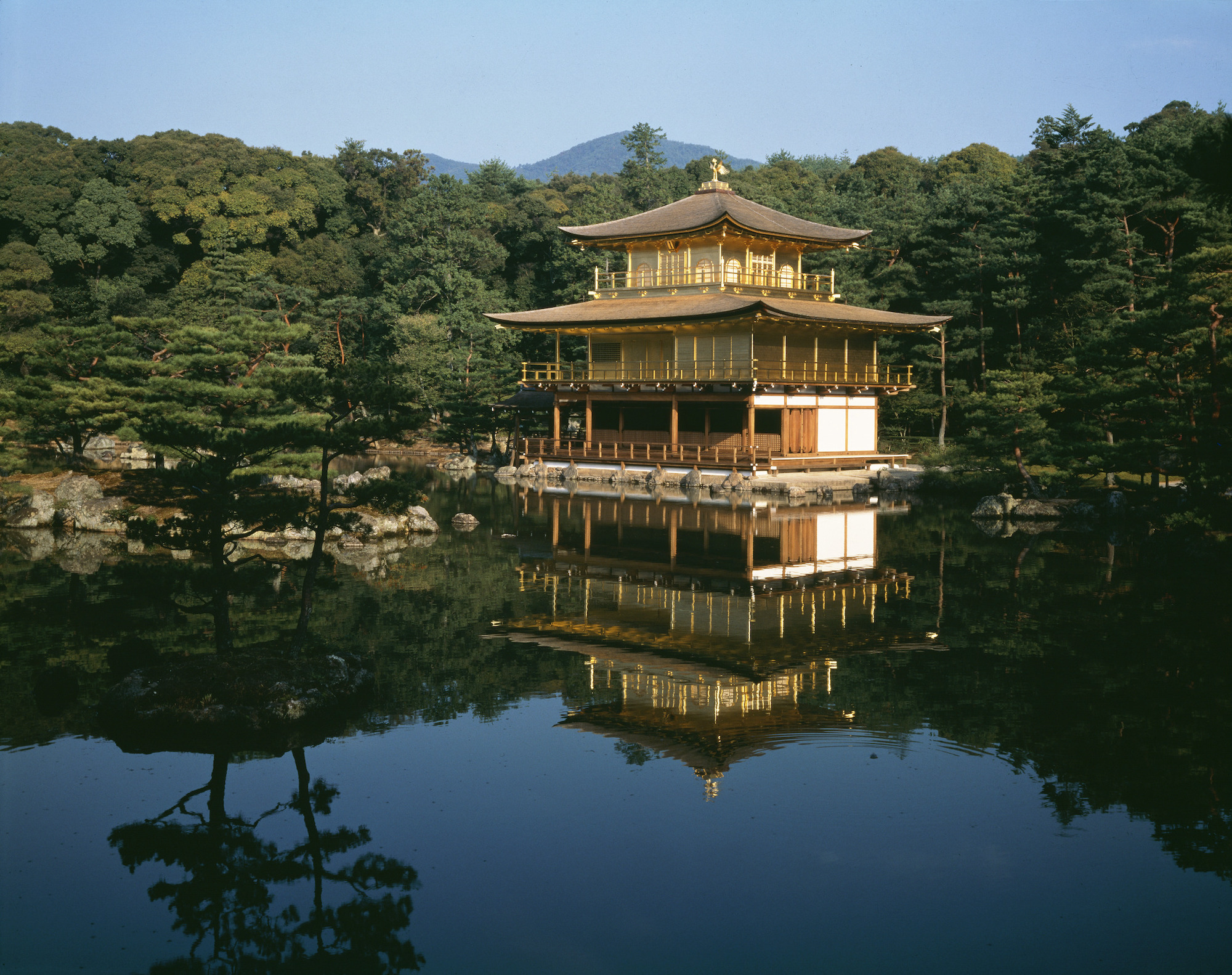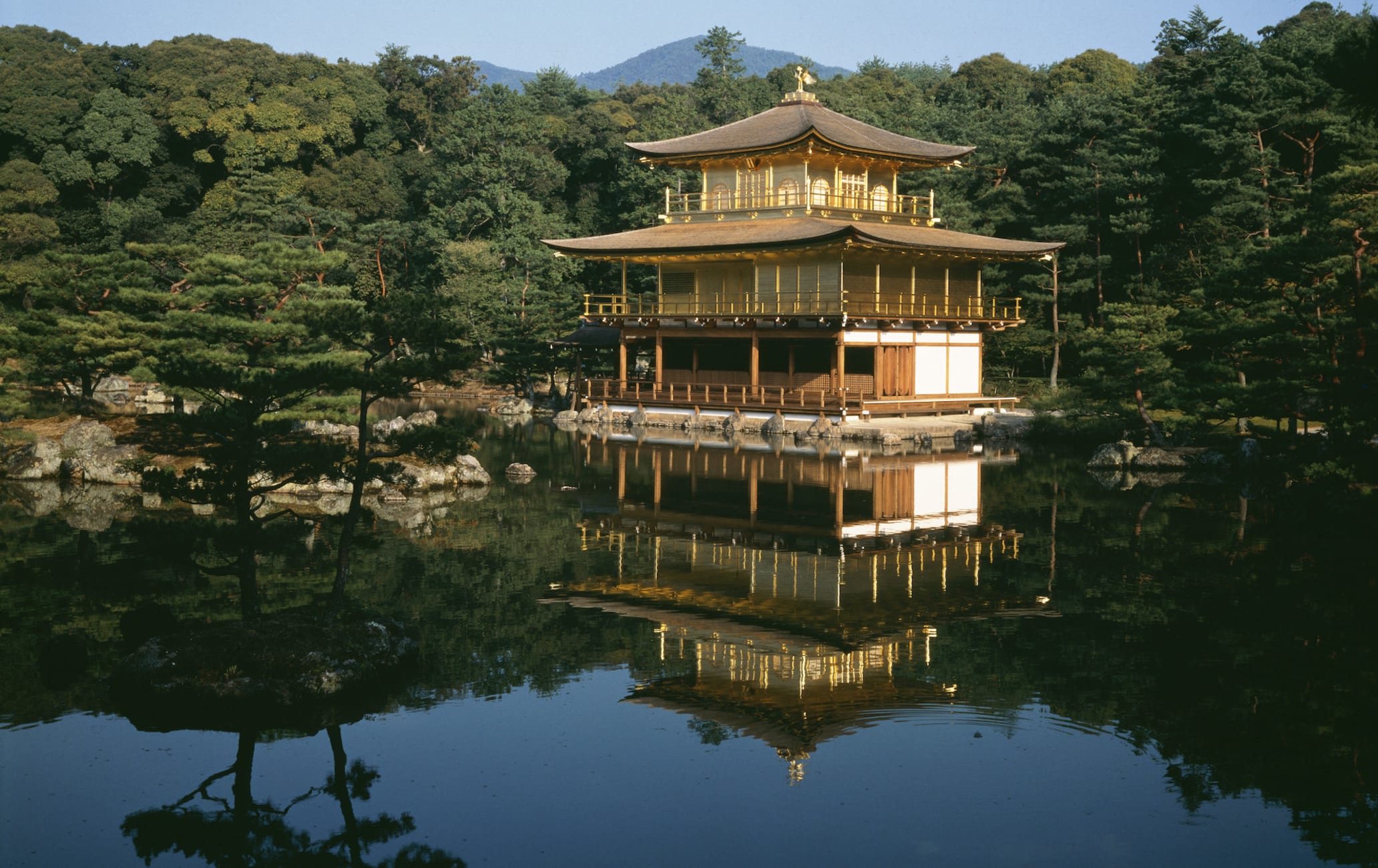A must-visit exemplary temple for those traveling to Kyoto
A renowned Zen Buddhist temple with centuries of history, Rokuonji Temple is more widely known today as Kinkakuji Temple―a name derived from the famed Golden Pavilion (reliquary hall) that serves as the centerpiece of the temple grounds. This three-tiered pavilion covered in gold leaf is one of the most famous and recognizable of all the historic structures in Kyoto. Now a UNESCO World Heritage Site, the temple is considered a must-see destination by visitors to the verdant city.
Don't Miss
- Observe the mirrored reflection of the Golden Pavilion on the serene Kyoko-chi Pond
- Witness the views of the Golden Pavilion unique to each season—particularly its breathtaking winter visage, wreathed in snow
- Visit the lush, mossy gardens and the tea house of the temple grounds
How to Get There
Board the Kyoto City Bus line from JR Kyoto Station (No. 205). Get off the bus at the Kinkakuji-michi stop, which should take 45 minutes to reach.
Quick Facts
Originally designated as a holiday villa for the shogun Ashikaga Yoshimitsu in 1397
Kinkakuji's temple grounds span some 132,000 square meters
The second and third stories of the pavilion are covered in gold leaf
From Shogun's holiday home to Zen temple
The reigning 14th century shogun Ashikaga Yoshimitsu obtained the grounds that now make up Kinkakuji Temple and built his vacation home, which he named Kitayamadono. Following his passing, the grounds were repurposed into a Zen Buddhist temple according to his wishes. The visually striking Golden Pavilion was built to enshrine the Buddha, with an additional shrine on the second tier dedicated to Kannon, the goddess of mercy.
Each of the pavilion's three stories are built according to unique architectural styles. The first tier: shinden-zukuri, an architectural style prevalent in the palatial homes of the aristocracy during the Heian period (794-1185). The second tier: buke-zukuri, a style commonly used in the residences of high-ranking samurai warriors of the Kamakura period (1185-1333). The third tier: traditional Chinese Zen architecture. The thatched, pyramidal roofs of each tier are layered in shingles, and the topmost two tiers are covered in the gold leaf that the Kinkakuji Temple name is derived from.

Rokuon-ji

Rokuon-ji
A garden gateway into the Buddhist worldview
The garden of the Rokuonji Temple grounds, registered as both a unique historic and scenic landmark, extends some 92,400 square meters. At the heart of the garden's lush views and verdant scenery is Kyoko-chi Pond, the “mirror pond” that famously reflects the image of the Golden Pavilion. Small islands of varying size dot the wide expanse of the water, such as the larger Ashiharajima or the more compact and stones jutting from the surface of the pond.

Rokuon-ji

Rokuon-ji
A designated World Heritage Site since 1994
The original structure of the Golden Pavilion was burned down in 1950 but rebuilt in 1955 based on a detailed reconstruction initiative. The pavilion was later designated a World Heritage Site in 1994 due to its spectacular architecture that uniquely harmonizes the culture and prevailing design of court nobles, samurai, and Buddhism.
Neighboring World Heritage temples to visit
Other nearby World Heritage Sites such as Ginkakuji Temple , Ryoanji Temple , and Tenryuji Temple are all well worth a visit. Much like Rokuonji Temple, they each offer an interesting view into how unique garden designs represent the world and ideals of Buddhism.
Ginkakuji Temple was originally built by Ashikaga Yoshimasa, the grandson of Ashikaga Yoshimitsu, and became a Rinzai Buddhist temple following Yoshimasa's death. The original official title of the temple is Higashiyama Jishoji Temple, but it is said to have been colloquially renamed Ginkakuji Temple during the Edo period (1603-1867) to provide a contrast to Kinkakuji Temple.
Ryoanji Temple is globally recognized for its famed stone garden: a landscape garden characterized by 15 stones set in white sand.
On the other hand, Tenryuji Temple is a famed scenic spot in Arashiyama designated in the 14th century as one of the five most prestigious temples in Kyoto.
* The information on this page may be subject to change due to COVID-19.

































































